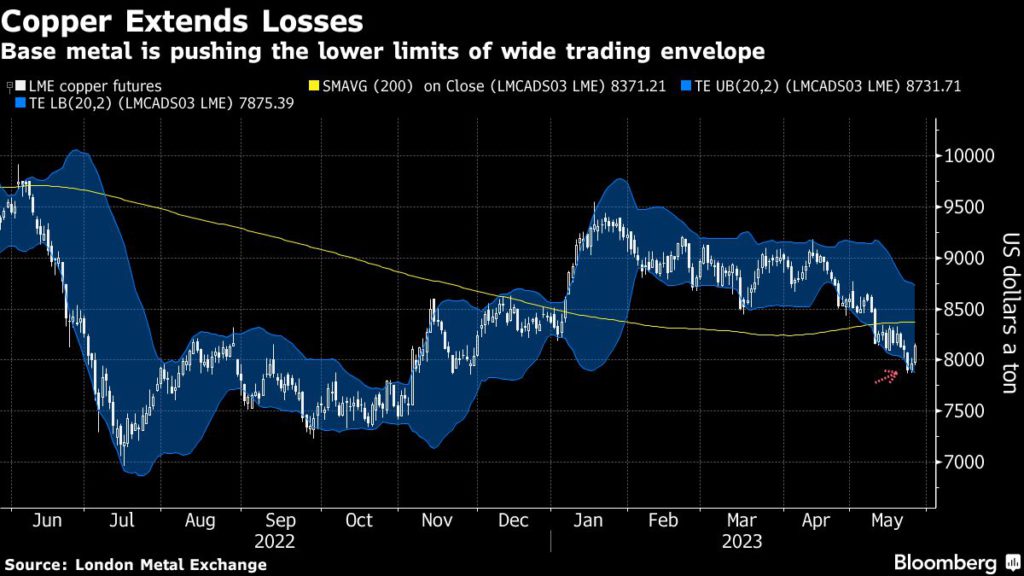US-China Trade Uncertainty Fuels Copper Price Increase

Table of Contents
The Impact of US-China Trade Wars on Copper Supply Chains
US-China trade tensions have significantly disrupted global copper supply chains. Trade tariffs and restrictions imposed by both countries have created bottlenecks, increasing costs and reducing the efficient flow of copper from mines in various countries, including those heavily reliant on trade with China, to processing facilities and ultimately to end consumers in the US and elsewhere. This disruption affects every stage of the copper supply chain, from mining and refining to manufacturing and distribution.
- Copper Mining: Increased tariffs on imported mining equipment can raise production costs, leading to reduced output.
- Copper Processing: Restrictions on the import of refined copper can limit the availability of raw materials for manufacturers.
- Manufacturing: Delays and increased costs in sourcing copper directly impact manufacturing schedules and profitability for businesses relying on copper as a raw material.
For example, the imposition of tariffs on certain types of copper products has led to increased transportation costs, delays in delivery times, and significant uncertainty about future trade policies, discouraging investment in new copper mining and processing facilities. This uncertainty ripples through the entire supply chain, impacting availability and contributing to the copper price increase.
Demand Fluctuations and Their Influence on Copper Prices
Trade tensions significantly impact global economic growth, directly affecting the demand for copper across various sectors. Economic uncertainty leads to reduced investment in large-scale infrastructure projects, a major consumer of copper. This is particularly noticeable in China, a significant driver of global copper demand.
- Construction: Reduced construction activity in China, due to slower economic growth and cautious investment, directly impacts copper demand.
- Electronics: Trade uncertainty can dampen consumer demand for electronics in both the US and China, leading to decreased copper consumption in this sector.
- Global Investment: Reduced global investment due to uncertainty about future trade relations further reduces overall copper consumption.
The interconnected nature of the global economy means that even seemingly localized trade disputes can have far-reaching consequences on copper demand, influencing copper price movements on a global scale.
Geopolitical Risks and Their Role in Copper Price Volatility
The impact on copper prices extends beyond the immediate US-China trade relationship. Broader geopolitical factors contribute significantly to market volatility. Global political instability and uncertainty affect investor sentiment, leading to speculation and price swings in the copper market.
- Political Tensions: Political unrest in copper-producing regions can disrupt supply, impacting copper prices.
- Currency Fluctuations: Changes in currency exchange rates can influence the cost of copper for buyers in different countries, impacting demand and prices.
- Market Speculation: Uncertainty about future trade policies and geopolitical events can lead to increased speculation in the copper market, driving price volatility.
Recent geopolitical events, such as escalating tensions in other regions, have demonstrated the significant influence of global instability on copper prices, adding another layer of complexity to predicting market trends.
Conclusion: Understanding and Navigating the Copper Market in a Time of US-China Trade Uncertainty
The ongoing US-China trade uncertainty significantly impacts copper prices by disrupting supply chains, dampening demand, and increasing geopolitical risk. Monitoring the evolving relationship between the US and China is crucial for making accurate copper price forecasts. Managing risk in this volatile market requires staying abreast of trade negotiations, geopolitical developments, and economic indicators influencing copper demand and supply. To navigate effectively, consider diversifying investments and employing hedging strategies.
To make informed decisions in the copper market, stay informed about developments in the US-China trade relationship and its impact on the copper price increase. Follow reputable sources for updates on copper market analysis and US-China trade negotiations. Understanding commodity price fluctuations and employing effective risk management strategies are vital in navigating this dynamic market. Stay informed, and make smart decisions in the evolving landscape of copper market trading.

Featured Posts
-
 Cole Escola From Clatskanie To Broadways Bright Lights
May 06, 2025
Cole Escola From Clatskanie To Broadways Bright Lights
May 06, 2025 -
 Zendayas Space Adventure Prepare For A Stunning Plot Twist
May 06, 2025
Zendayas Space Adventure Prepare For A Stunning Plot Twist
May 06, 2025 -
 Met Gala 2025 A Look At The Potential Celebrity Guest List
May 06, 2025
Met Gala 2025 A Look At The Potential Celebrity Guest List
May 06, 2025 -
 Breaking Barriers Cole Escola Nominated For Best Leading Actor In A Play
May 06, 2025
Breaking Barriers Cole Escola Nominated For Best Leading Actor In A Play
May 06, 2025 -
 Where To Watch The Knicks Vs Celtics 2025 Nba Playoff Games
May 06, 2025
Where To Watch The Knicks Vs Celtics 2025 Nba Playoff Games
May 06, 2025
